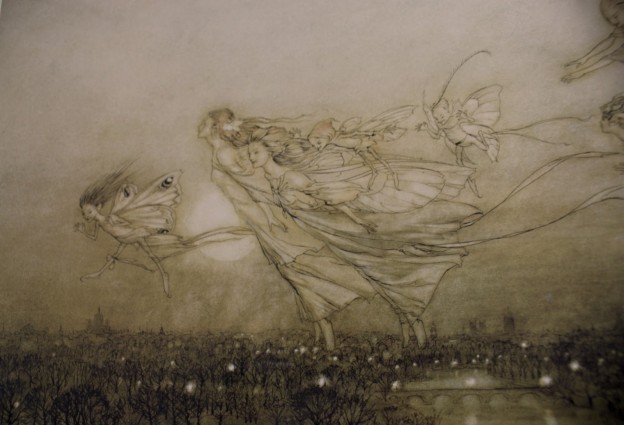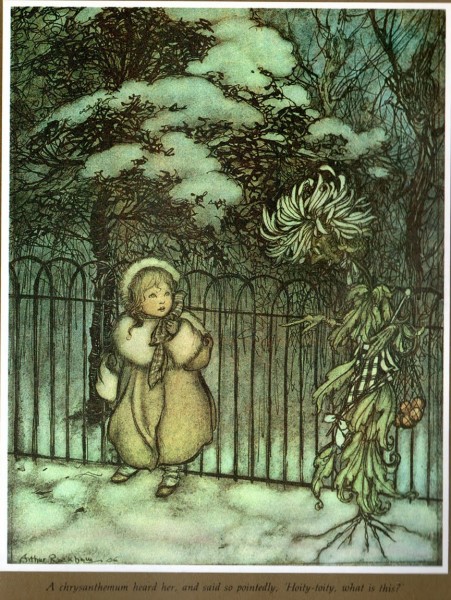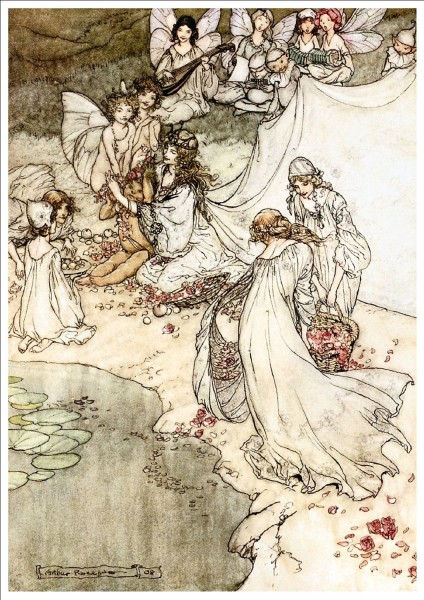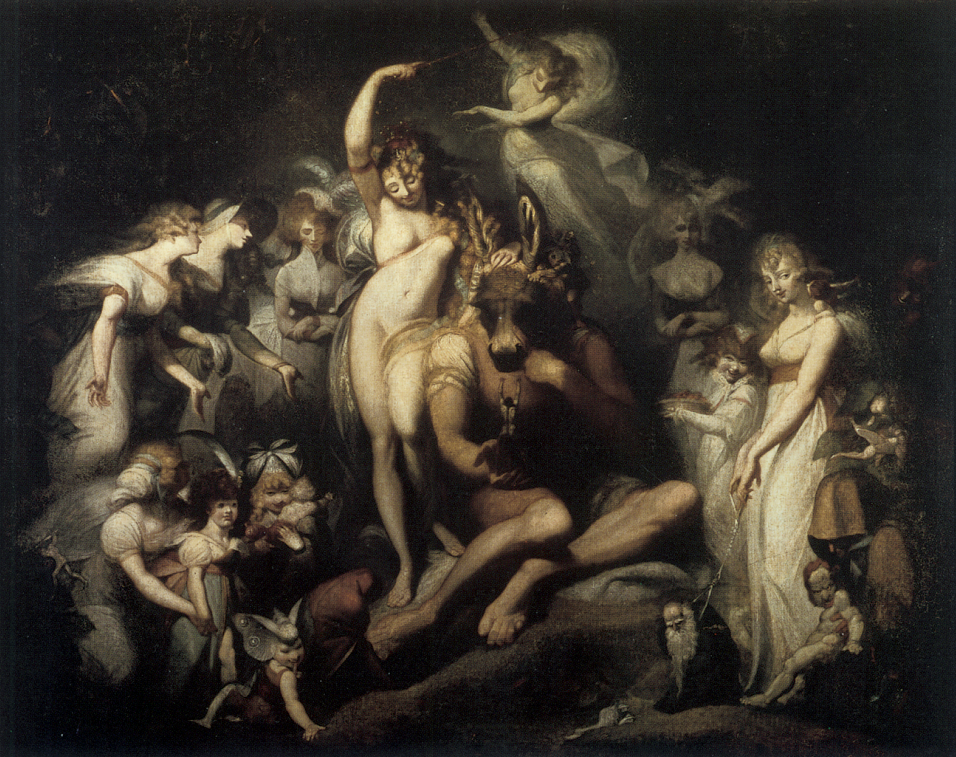Arthur Rackham (1867-1939) was a talented British artist who came to prominence in the very last years of the nineteenth century as a gifted children’s illustrator. He borrowed from the traditions of German and Japanese printmaking to produce a characteristic style, where the denizens of fairy combined terror with Edwardian haughtiness and class consciousness: the picture above is described as ‘The Fairies have a Tiff with the Birds’ and might be the Jones not talking to the Smiths, c. 1900. This one below is a slightly more etheral take on the same: these fairies have clearly been told not to talk to the dirty little children from the other side of the street.
The terror (alluded to above) is particularly pronounced when Rackham introduces being from the vegetable world: and this is the period, remember, when fairies are being recast as spirits of vegetation. The image above shows an unlikely encounter with a chrysanthemum, whereas the image below, is taken from a Milton illustration (‘Calling Shapes, and beckoning Shadows dire’) and shows a characteristic Rackham tree. Don’t pull this guy’s leaves… (Not that he has many!)
Rackham’s lack of sentimentality was particularly striking on the children’s book market. There are no fairies in the image but we’ve been unable to resist this study of a spider and a gnat, it tells you everything you need to know about the limits of good taste!
Rackham also worked this into a fairy theme entitled the Rescue, which, we must hope, finishes well.
Enjoy too these ruthless Rhine mermaids about to drown some innocent sailor.
And for fans of ABC this tabby looking as if it is ready to eat you in Rackham land.
Rackham’s ability to give nobility to his child protagonists (particularly evident in his illustrations of Alice in Wonderland, for example see below) made him unusual in a period when children were to be seen but not heard. Look at Alice’s intelligent expression and eyes.
However, it was his understanding of ‘the new fairy’ – natural, mischevious, anarchic… – that made him, with his trademark soft blues, greens and reds one of the great Victorian and Edwardian fairy artists.
It is often said that Rackham was a precursor of Walt Disney. Disney lacked though Rackham’s edge and Rackham would never have consented to the prettification of fairies.
Above is an oft repeated image in fairy art – to fairy art what the last supper is to Christian art – the meeting of Titania and Oberon.
And so at home was Rackham with fairies that they crop up in the most unexpected places, e.g. in the Father Christmas card below, where his usual fey have been turned into elves for the occasion.
One of several self portraits that survive to round off.






























